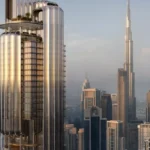Now Reading: Number 13 in Detroit Architecture: 7 Chilling Facts Uncovered
-
01
Number 13 in Detroit Architecture: 7 Chilling Facts Uncovered
Number 13 in Detroit Architecture: 7 Chilling Facts Uncovered

Table of Contents
Number 13 in Detroit Architecture has always stirred public curiosity and superstition. Whether you’re walking downtown, admiring the skyline, or riding an elevator to the upper floors of a skyscraper, you might notice something odd — the mysterious disappearance of the 13th floor. It’s not just your imagination. Detroit, like many other cities, has a history of avoiding the number 13 in its architecture. But why?
In this article, we’ll explore how some of Detroit’s most prominent buildings handle the number 13, why developers skip this “unlucky” number, and what it says about the city’s relationship with superstition and modern design.
Why the Number 13 in Detroit Architecture Is Feared

Detroit is no stranger to architectural marvels. From the Art Deco brilliance of the Guardian Building to the towering Renaissance Center, the Motor City boasts a skyline rich with history and design. But hiding behind those beautiful façades is a strange truth: many buildings exclude the number 13 altogether.
Elevators jump from floor 12 to 14. Hotel room numbers skip 13. Some parking garages omit level 13. This isn’t a coincidence — it’s a design choice influenced by long-standing superstitions, deeply rooted in Western culture.
The fear of the number 13 is called triskaidekaphobia, and it’s a real phobia that has shaped city planning and design — including that of Detroit.
The Superstition Behind Number 13 in Detroit Architecture
From ancient times, the number 13 has been seen as unlucky. In Christianity, it’s tied to the Last Supper, where Judas Iscariot — the betrayer — was the 13th guest. In Norse mythology, a similar betrayal occurred with the trickster god Loki.
In modern times, this superstition has been embedded into architecture. Detroit developers often fear losing tenants or hotel guests who might be uncomfortable staying on a 13th floor or in room 13. So they simply avoid labeling anything with the number 13.
7 Chilling Ways the Number 13 Affects Detroit’s Buildings
1. No 13th Floor in the Renaissance Center
Detroit’s tallest skyscraper complex, the Renaissance Center, owned by General Motors, skips the 13th floor in most of its towers. Though the floors exist structurally, the button marked “13” is missing from most elevators.
2. Hotels Quietly Avoid Room 13
Visit luxury hotels like the Detroit Marriott at the Renaissance Center or the Westin Book Cadillac. You’ll rarely find room number 13 or a 13th floor. Guests are more comfortable, and it keeps the reputation of the hotel intact.
3. Skyscrapers Re-label Level 13
In office buildings, the 13th level is often labeled as “14,” “12A,” or even “Mezzanine.” This keeps tenants calm and preserves leasing appeal. The psychological impact of the number is enough to affect commercial real estate decisions.
4. Residential Towers Avoid Address Numbers With 13
Some high-rise apartment buildings skip unit numbers like 1313 or 1303. Developers choose to skip the number 13 altogether in addresses when possible — especially in upscale neighborhoods.
5. Parking Structures Disguise Level 13
Even parking garages in Detroit’s downtown area follow suit. The 13th level might be renamed as “Roof” or “Upper Deck.” This trend is part of the wider fear of bad luck, even in vehicle storage.
6. Medical Facilities Avoid 13th Floor Appointments
Hospitals and clinics in Detroit, including major centers like the DMC, often don’t schedule surgeries or key appointments on a 13th floor (if they even have one), playing into the belief that health outcomes could be affected.
7. Office Towers Use Creative Numbering
Many buildings use creative tricks to maintain the illusion that 13 doesn’t exist — such as skipping straight from 12 to 14, or replacing 13 with letters or branding names. This helps soothe tenant fears and maintains corporate branding.
Is It Really About Superstition — or Smart Business?
While it may seem like an outdated belief, omitting the number 13 is often a marketing strategy. Builders and investors don’t want to risk losing even a small percentage of buyers or tenants who feel uneasy.
This fear is not limited to Detroit. It’s common across cities like New York, Chicago, and Los Angeles. But what makes the number 13 in Detroit architecture special is how widespread — and subtle — the practice is. Some developers won’t admit to it publicly, but they quietly follow the trend.
Public Opinion: Mixed Reactions from Detroiters
Detroiters have mixed views. Some believe fearing the number 13 is outdated and irrational, while others feel more comfortable knowing it’s avoided.
A local office worker from Campus Martius shared:
“I work on the 14th floor, but I know it’s really the 13th. I still feel weird sometimes. It’s psychological.”
Meanwhile, a Detroit architect says:
“It’s just part of the design language now. We skip it not because we believe in the superstition, but because some of our clients do. It’s about comfort and marketability.”
Will Future Detroit Buildings Still Fear Number 13?

As Detroit evolves with more tech-driven and modern designs, some architects are pushing back. New residential and commercial buildings are starting to reintroduce the number 13, branding it with a bold, stylish identity.
One local developer working on Midtown projects noted:
“We want to break the stigma. We even promote the 13th floor as a ‘lucky’ one.”
That said, most high-rises still follow the tradition — showing that even in a modern world, the number 13 in Detroit architecture still holds a strange and powerful grip.
Conclusion: Number 13 in Detroit Architecture Still Spooks the Skyline
The fear of number 13 may sound like folklore, but it still impacts real business decisions in Detroit. From elevators to room numbers and floor plans, the number 13 in Detroit architecture reflects a deeper truth — superstition and design are closely connected.
As the city grows and new buildings reshape the skyline, it remains to be seen whether Detroit will embrace or keep avoiding the number 13. For now, this small number continues to leave a big impression on the Motor City.
Also Read – Green Light: 250 New Units to Boost City Life



















